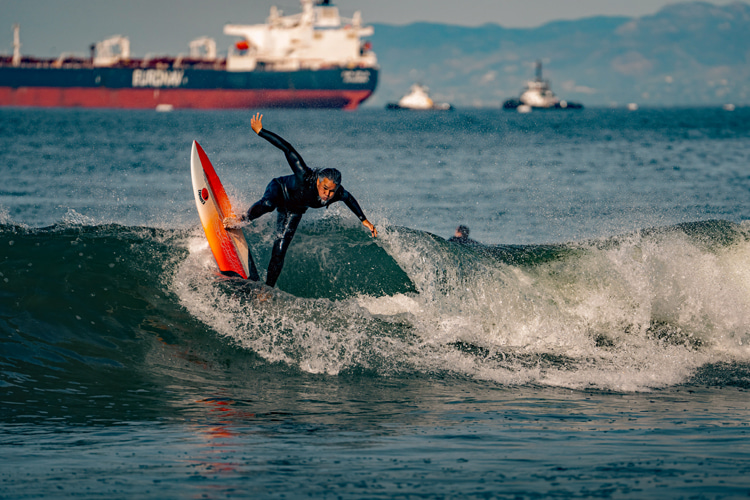El Porto is a wave magnet, and for that reason, it is one of the most crowded surf breaks in Los Angeles. Here's what makes it special.
Everybody knows that El Porto does not have a good reputation.
It's frequently mocked, downplayed, and criticized, even by those who never surfed it.
The truth is that it is quite often as crowded as Pipeline on a good day.
But again, it appears to be a ride-it or leave-it wave.
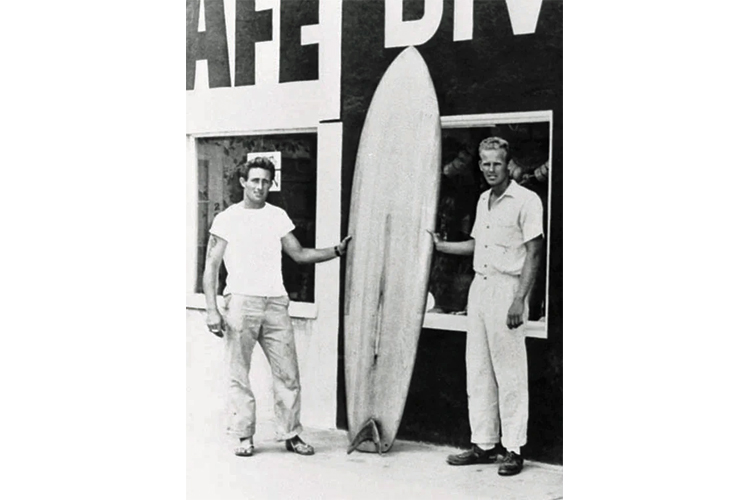
A Post-Industrial Surf Haven
Historically, we know that surfboard-shaping innovator Dale Velzy developed his signature V-fin to increase the hold of his board's tail in the challenging and pounding waves of El Porto and Manhattan Beach.
If you've never had a surfing experience in a post-industrial setting, surrounded by first-generation energy industries, then El Porto could be an option.
Located in the heart of the Los Angeles County Coast, El Porto and El Segundo are two well-known company communities dominated by Chevron and Southern California Edison (SCE).
In 1911, this segment of the South Bay was deemed isolated and unattractive, which is when the refinery was established to manufacture kerosene.
Times have changed dramatically, and the population of LA County has surged by millions.
However, the largest producing oil refinery on the West Coast kept growing and now processes over 276,000 barrels of crude per day.
So, instead of typical SoCal seaside boardwalks punctuated by tall palm trees, surfers and beachgoers may only glimpse the human-made traces of an electricity-producing facility and an oil refinery.
However, the place is normally crowded with hundreds of surfing enthusiasts - beginners, intermediate and advanced riders.
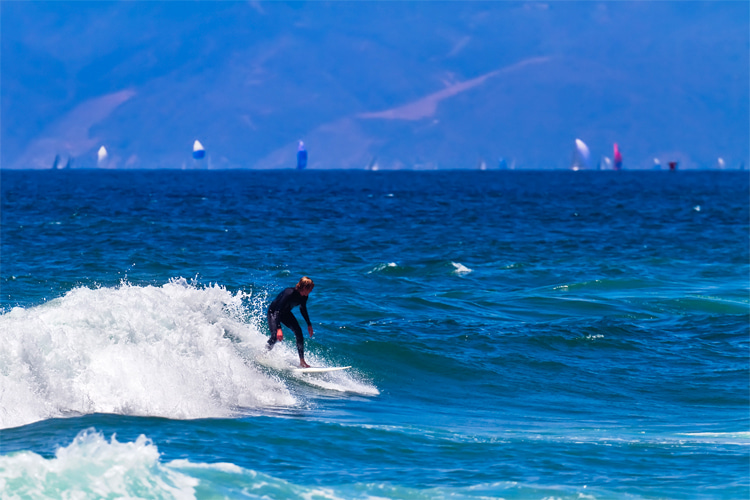
A Swell Magnet
El Porto attracts so many surfers because of the consistent waves and their above-average quality and height compared to nearby peaks in the Santa Monica-Torrance stretch.
And there's plenty of swell coming throughout the seasons thanks to the funneling effect of the deep Santa Monica Trench located a few miles offshore.
As with most active beach breaks, sand banks are key to perfection and pristine wave-riding conditions.
In order to experience epic, unforgettable sessions, the design of the sandy bumps and holes must be aligned with the swell period and angle.
When it happens, perfectly shaped A-frame waves and heavenly cut barrels come alive.
On big days, if the marriage conditions are not in place, El Porto provides the heaviest closeouts in the region.
The spot is always extremely sensitive to subtle wind speed and direction changes.
Check the El Porto surf report and the real-time wave conditions for El Segundo's famed breaks.
Plenty of Winter Barrels
Officially, the El Porto neighborhood runs from the original 38th Street peak in the south to 45th Street in the north, where it meets Manhattan Beach.
However, the surf zone blends and shifts toward El Segundo, depending on the conditions.
Up north, there's Shit Pipe, a peak located in front of the Hyperion Water Reclamation Plant. The spot produces a fun left-hander during winter swells off the disabled sewer pipe caisson that runs out to sea.
Slightly south, you'll find Hammerland, one of South Bay's best waves.
It's located on the north side of the jetty built in front of the El Segundo Energy Center.
With some powerful winter swells, there are some big and hollow barrels to tame and claim.
It's also the place where Chevron built the controversial Pratte's Reef.
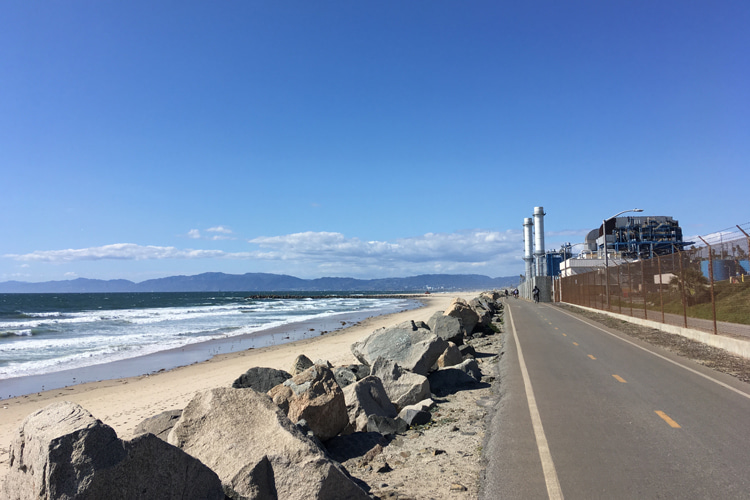
Pratte's Reef
The Pratte's Reef was an artificial reef constructed off the coast of El Segundo, California, with the intent to enhance surfing conditions.
Named after Tom Pratte, a pivotal figure in its inception, the reef was part of a mitigation strategy following the construction of a jetty by Chevron in 1984.
The jetty was originally built to protect against sand erosion and safeguard oil pipelines, but had an adverse impact on local surf conditions.
Tom Pratte was instrumental in ensuring that the permit issued to Chevron included a clause to monitor and address any negative effects the jetty might have on surfing spots.
This ultimately led to the acknowledgment by the Coastal Commission in 1990 that the jetty had indeed deteriorated the surf, particularly affecting a wave near Grand Avenue.
The ensuing years saw negotiations between Chevron, the Surfrider Foundation, and the Coastal Commission, leading to a consensus in 1998 to install an artificial reef.
This project would be partially funded by Chevron, which contributed $300,000.
Skelly Engineering was commissioned to design Pratte's Reef, which took the shape of a "V" or delta with arms angled at 45 degrees to the incoming swells.
The structure was to be formed from geotextile bags filled with sand and placed about 100 meters offshore, with the top of the reef just one meter below sea level at low tide.
The initial construction in 2000 used 110 bags, each weighing 14 tons, and was carried out during the summer.
However, the first winter swells buried the system, indicating that the structure was too small.
An additional $250,000 was invested to add 90 more bags in 2001, attempting to raise the reef's profile.
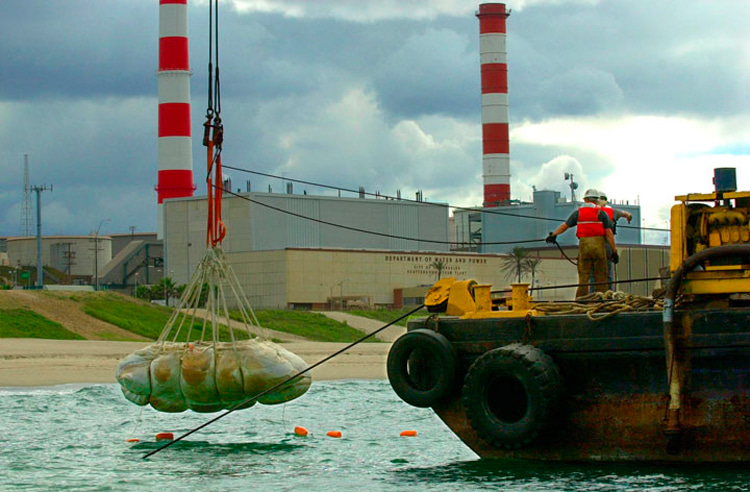
The Bittersweet End
Despite these efforts, Pratte's Reef did not consistently produce the quality surfing conditions it was designed to enhance.
Observations suggested that it only generated "epic" waves a few times a year.
Detailed scrutiny by experts like Dr. Jose Borrero and Chad Nelsen revealed that the reef was not only too small compared to other artificial reefs but also positioned too close to the shore.
Problems persisted with the reef's maintenance, as the geotextile bags deteriorated, were displaced, and were buried by sand.
Considering the risks posed by the degrading bags and the failure to meet the objectives, the decision was made by the Surfrider Foundation to remove the structure.
This was done with a $300,000 anonymous donation, and the removal process was completed by 2010.
Despite the failure of Pratte's Reef to create a sustainable surf spot, its legacy is twofold.
First, it demonstrated a legal and environmental recognition of surfable waves as a valuable resource to be protected.
Second, it provided valuable lessons for future artificial reef projects.
Additionally, the project was groundbreaking in that it was the first time the Coastal Commission had recognized the importance of surfing and the first time an artificial reef had been approved by all 23 involved agencies.
The history and outcomes of Pratte's Reef have been documented in a film by Kurt Schaefer, which provides rich historical context and footage.
Pratte's Reef was not the first attempt at artificial reef construction in America; that distinction goes to Hoppy's Reef in Redondo, installed in 1971.
El Porto, California | ID and X-Ray
Location: El Porto, Manhattan Beach, Los Angeles County
Type of Wave: Beach Break
Length: 100+ yards (100 meters)
Best Swell Direction: SW, WSW, W, WNW
Best Wave Size: 5-10 Feet
Best Wind Direction: E-SE
Best Tide: Mid
Best Time to Surf: Fall-Spring (October-April)
Skill Level: Beginner, Intermediate and Advanced
Best Board: Shortboard, Fish, Funboard, Longboard, Bodyboard
Crowd: Heavy
Water Quality: Fair
Hazards: Crowd
Bottom: Sand
Water Temperature: 55-70 °F (13-21 °C)
Getting There: Paddle-out
